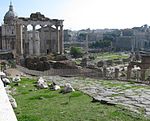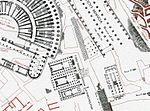Sack of Rome (410)

The Sack of Rome on 24 August 410 AD was undertaken by the Visigoths led by their king, Alaric. At that time, Rome was no longer the capital of the Western Roman Empire, having been replaced in that position first by Mediolanum in 286 and then by Ravenna in 402. Nevertheless, the city of Rome retained a paramount position as "the eternal city" and a spiritual center of the Empire. This was the first time in almost 800 years that Rome had fallen to a foreign enemy, and the sack was a major shock to contemporaries, friends and foes of the Empire alike. The sacking of 410 is seen as a major landmark in the fall of the Western Roman Empire. St. Jerome, living in Bethlehem at the time, wrote; "the city which had taken the whole world was itself taken."
Excerpt from the Wikipedia article Sack of Rome (410) (License: CC BY-SA 3.0, Authors, Images).Sack of Rome (410)
Lungotevere dei Pierleoni, Rome Municipio Roma I
Geographical coordinates (GPS) Address Nearby Places Show on map
Geographical coordinates (GPS)
| Latitude | Longitude |
|---|---|
| N 41.89 ° | E 12.48 ° |
Address
Anagrafe Centrale
Lungotevere dei Pierleoni
00153 Rome, Municipio Roma I
Lazio, Italy
Open on Google Maps











